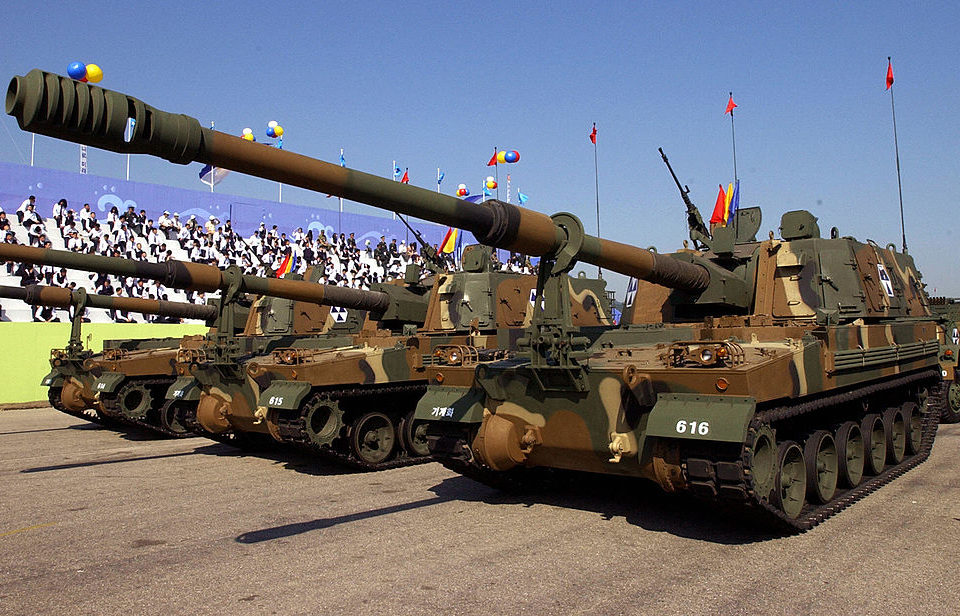Following the Second World War, Korea split into two regions along the 38th Parallel. The North fell under the perview of the Soviet Union, while the South was under the influence of the United States. Similar to the USSR and America, both North and South Korea were (and continue to be) in an arms race, which eventually led to the K9 Thunder being added to the South’s arsenal.
Development of the K9 Thunder
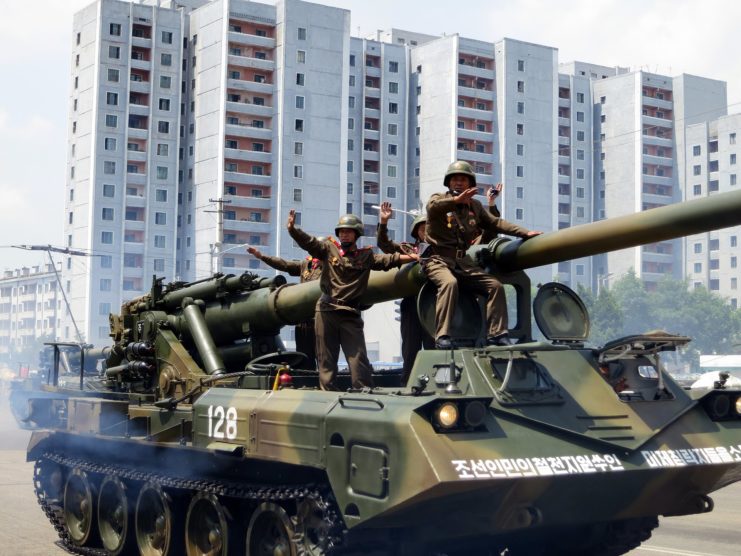
In the 1980s, South Korea heavily relied on both the K55 howitzer, a variant of the M109A2, and M107 self-propelled gun to defend against a possible attack from the North. While excellent systems in their own right, they were decades old, meaning they needed to be upgraded, and also had shorter firing ranges than North Korea’s M-1978 Koksan artillery system.
A proposal to refit the K55 was rejected by the Republic of Korea Armed Forces, leading to the development of a new artillery system. The primary designer of what would become the K9 Thunder was the Agency for Defense Development (ADD). According to military officials, the new vehicle needed to feature an anti-air weapon, preferably the M61 Vulcan, and the ability to cross rivers.
Despite manufacturing the K55, ADD had no experience designing its own vehicles, let alone an artillery system. As such, it took a few years for the first prototype to be produced, with the K9 Thunder entering production in 1999.
K9 Thunder specs
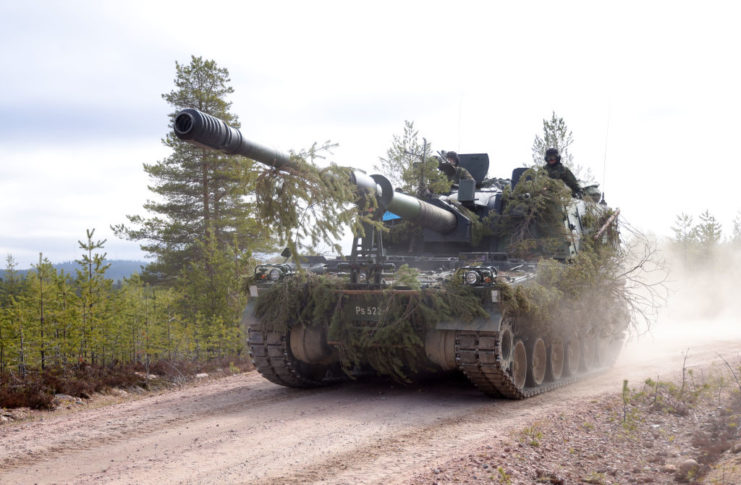
When all was said and done, the M61 wasn’t added to the K9 Thunder, as it was later determined to be unnecessary. Instead, the artillery system features the Hyundai WIA CN98 155 mm as it main armament, with the SNT Dynamics K6 12.7 x 99 mm NATO HMG as its secondary. The former has a maximum firing range of between 25-34 miles, depending on the ammunition, and a firing rate of three rounds per 15 seconds.
Along with featuring powerful weaponry, the K9 Thunder is also well-armored, wrapped in MIL-12560H steel armor developed by POSCO for the K2 Black Panther. Not only can this withstand blasts from anti-personnel mines, but it’s also capable of protecting against 155 mm High-Explosive (HE) and 14.5 mm armor-piercing rounds.
Bombardment of Yeonpyeong
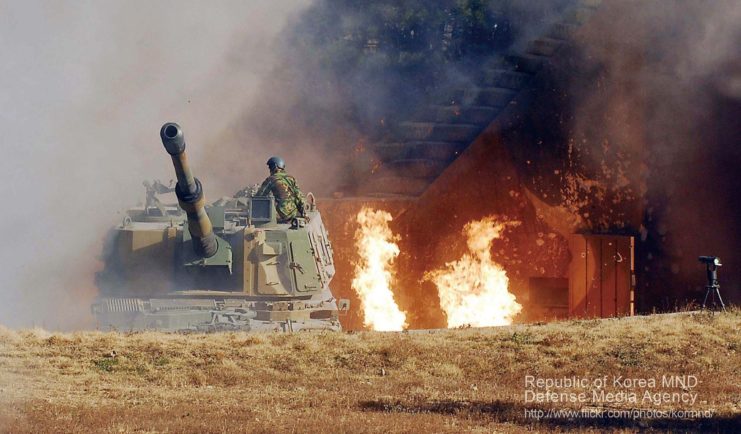
The K9 Thunder first entered service in 1999, but it would be over 10 years before the howitzer participated in its first fight. On November 23, 2010, South Korea was conducting a military exercise in disputed waters near Yeonpyeong Island, which the North viewed as an act of aggression. This led them to fire 170 shells in that direction, causing widespread damage. In response, the South returned fire.
Prior to the exercise, the North had wired a message to the South, asking if it was an attack and warning that it wouldn’t sit idle if weapons were fired in the region. Despite this, the South went ahead with the exercise. During the engagement, four people were killed and another 22 were injured, while two K9 Thunders sustained damage. Casualties included both military personnel and civilians.
The skirmish was considered to be one of the most serious crises between the two countries since the Korean War and is said to have caused an escalation of tension along the Korean Peninsula.
Other countries have adopted the K9 Thunder
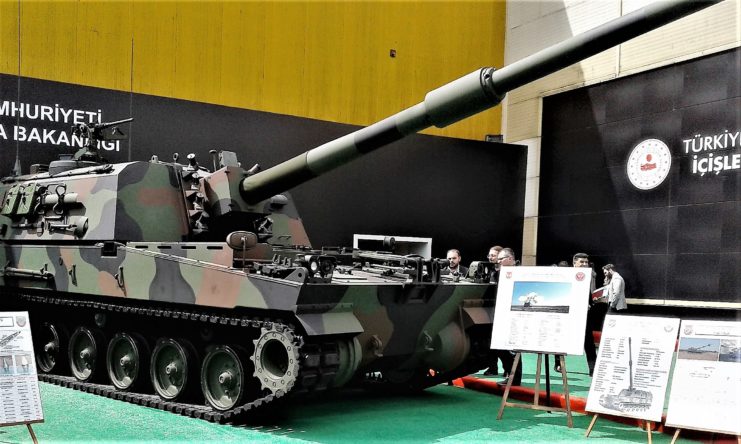
Several nations have purchased the K9 Thunder for use within their own militaries. In 2001, Turkey came to an agreement with South Korea, which allowed the country to make its own version of the artillery system, dubbed the T-155 Fırtına. At present, 280 have been produced for use by Turkish military forces.
In 2014, Poland reached a deal to purchase 120 K-9 Thunder chassis to serve as the base for the AHS Krab, a 155 mm howitzer being developed by Polish designers. In 2022, the country sent 18 of these artillery systems to Ukraine for use in its war against Russia.
The same year Poland made its deal with South Korea, India ran a test to compare the K9 Thunder to Russia’s 2S19 Msta. The winner was the former, leading the country’s military to order 100 of the artillery systems, dubbed the K9 Vajra-T. A deal to purchase an additional 40 was signed in 2021, with these newer howitzers being outfitted for service at higher altitudes.
Other countries to have purchased either the rights to the K9 Thunder’s design or the artillery system outright include Finland, Norway, Estonia, Australia and Egypt.
A number of variants have been developed
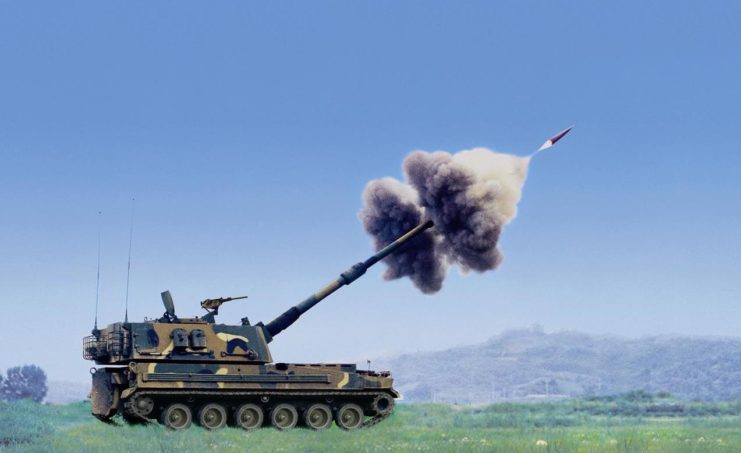
In addition to changes made to the K9 Thunder by other countries, there have been two major variants developed, with one more in the works. The K9A1 saw upgrades to the howitzer’s computer system, making its GPS and driver’s system more efficient. The engine was also upgraded to make it quieter and more fuel efficient.
The K9A2 features an enhanced main gun, with a longer barrel life, faster rate of fire and farther range. The howitzer’s armor was also enhanced, allowing it to defend against anti-tank mines. Additionally, a fully-automated autoloading system was installed, and many of its computer systems were, again, upgraded.
More from us: LRAC-50 73 mm Bazooka: The Incredibly Effective French Anti-Tank Weapon
In 2020, plans were announced for the K9A3. It’s still in the initial stages of development, but is expected to include unmanned technology and a cannon that can fire up to 62 miles. There’s also discussions regarding the addition of a railgun and super long-range cannon to the howitzer.
